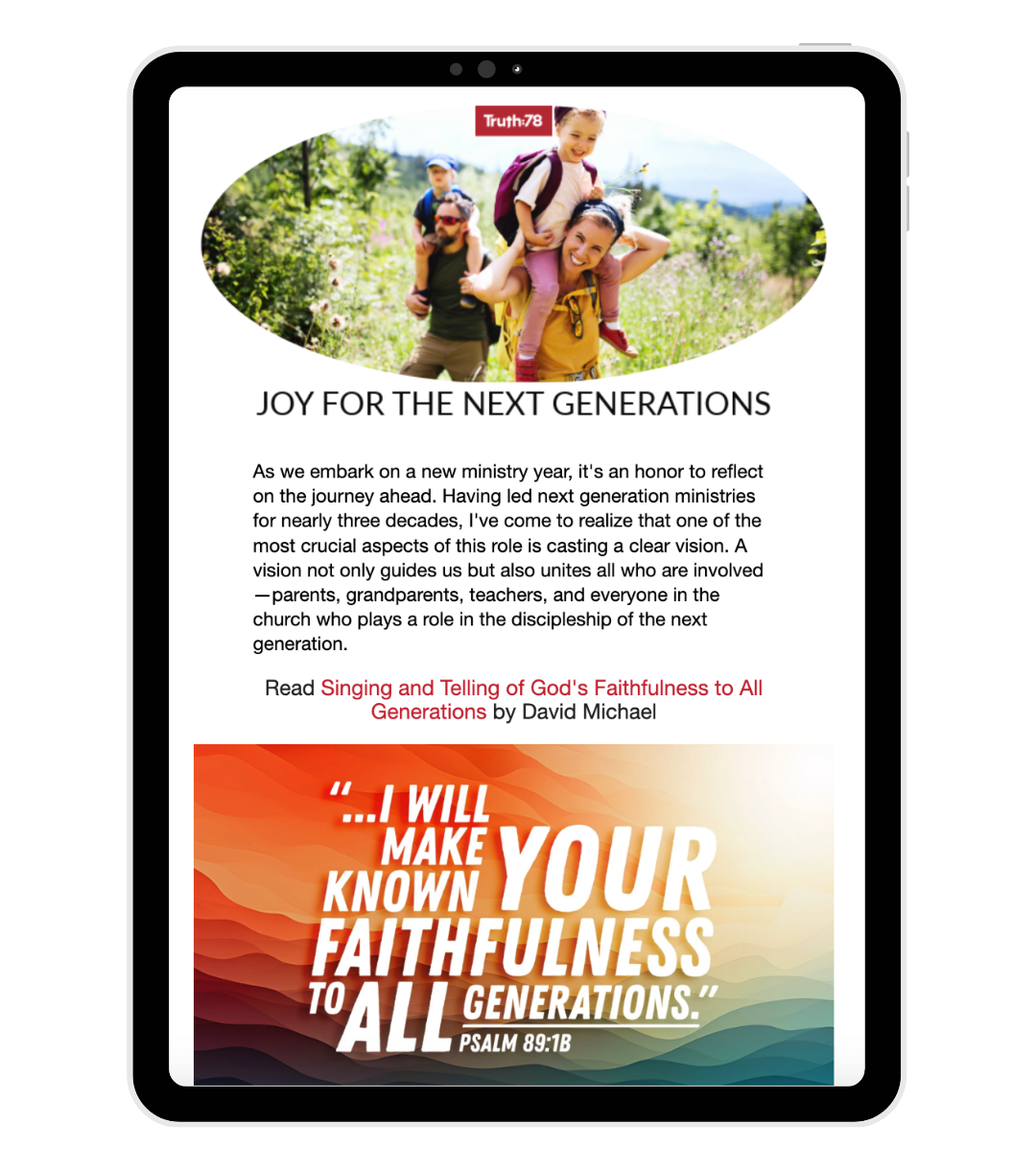Read the previous posts in this series:
- Part 1: Giving Children a Gospel Alphabet
- Part 2: The Gospel Alphabet—Teaching the “Antecedents”
- Part 3: The Gospel Alphabet—A Robust Doctrine of God
“I can do it all by myself” is a comment we hear increasingly from our 5-year-old grandson. Whether it is brushing his teeth, getting dressed, or buckling himself in his car seat, he is slowly but surely moving toward a healthy type of independence necessary for adulthood. As parents, we strive to progressively instill this in our children. However, as good as this goal is for our children, we must at the same time help them grasp and pursue a greater level of dependency. “I can do it all by myself” can be dangerous and deadly! How so? In the previous post in The Gospel Alphabet series, I spoke of the necessity of giving our children a robust doctrine of God. Understanding who God is and what He is like is crucial for children knowing who they are. For example, consider Genesis 1:1, which most of our children have easily committed to memory,
In the beginning, God created the heavens and the earth. (ESV)
Although it is a seemingly simple verse, it carries profound meaning and implications that we must communicate to our children, such as:- God is the one, eternal, self-existent, almighty Creator.
- God rightly owns and governs His creation.
- God decides what is true and right.
- We are dependent on God for “life and breath and everything” (Acts 17:25).
- God is our Ruler, and we live under His supreme authority (1 Chronicles 29:12).
- We are all accountable to God (Hebrews 4:12).
So God created man in his own image, in the image of God he created him; male and female he created them. (ESV)
This text, and many others, stress the importance of God creating us in a special way—in His image and likeness for a special purpose. For our children, we can explain this “image” bearing and our purpose at a basic level:- We were created with minds so that we could know God, think about how great He is, and acknowledge Him as our Creator and Ruler—giving honor to Him.
- We were created with hearts so that we would love God most of all, giving Him our greatest respect and devotion, and enjoying Him more than anything or anyone else.
- We were created with wills so that we would trust in God and depend on Him, believing what He says is true and best. We are to make choices and decisions to do things His way, and not our own way, always obeying Him.
- We were created live in relationship with God. He is to be closer to us than anyone else. We were made to need His love, presence, and friendship. His is the only relationship that can make us truly happy.
(Here are some verses that highlight these truths to read and discuss with your children: Deuteronomy 27:10; Psalm 16:11; Psalm 96:9; Psalm 100:4; Proverbs 3:5; Matthew 22:37; 1 Corinthians 10:31.)
We could summarize these foundational truths as follows:We were created in the image of God so that we would glorify God by trusting, loving, obeying, and enjoying Him—always giving God the thanks, honor, and worship He deserves.
Why do I consider this to be part of the “Gospel alphabet”—foundational truths—that children must be taught? Because it points our children to the only means of their everlasting joy. It helps them to see their desperate need for the Gospel. It magnifies the work and worth of Jesus, who alone can bring us near to God!
Read more:







